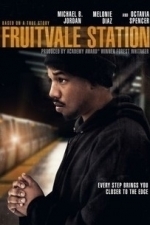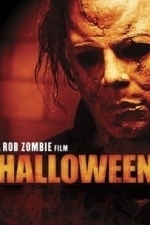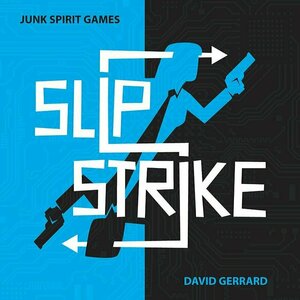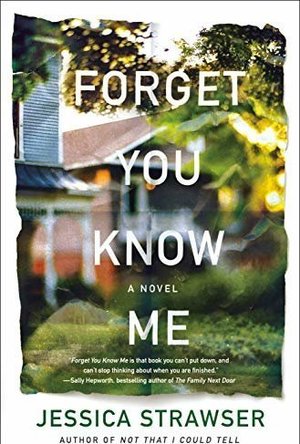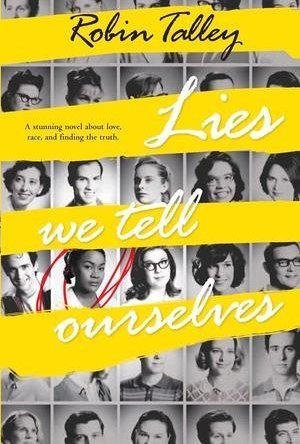
Office touch: word processor + spreadsheet file editor
Business and Productivity
App
Like to have an "All in One" app to create both spreadsheets and documents? This app has been...

CHAOS Combat Copters HD - №1 Multiplayer Helicopter Simulator 3D
Games and Entertainment
App
ENJOY WHAT IS SIMPLY THE BEST MULTIPLAYER HELICOPTER ARCADE ON TABLETS & SMARTPHONES C.H.A.O.S -...
Kirk Bage (1775 KP) rated Fruitvale Station (2013) in Movies
Aug 6, 2020
Borderline superstar Michael B. Jordan owes his career to Ryan Coogler, which began in earnest in 2013 with the strong effort of true story Fruitvale Station, highlighting the life and final moments of Oscar Grant, who was one of a tragically long list of innocent young men murdered by the police in modern America. Since then he has gone on to star as the eponymous Creed and as the popular Erik Killmonger in Black Panther, making him more or less the most famous black actor under forty currently at work.
I mention him first because having seen the other two films first, I have to admit I wasn’t quite getting it. I mean he is fine in both movies, but nothing world beating. Then you go back to his acheivement in the earlier film and begin to see what he might be capable of given the right scripts. He pretty much embodies Oscar Grant to a degree you believe you are watching a documentary. Which is the major plus point of Ryan Coogler’s direction also.
By pulling us in to the family life of Oscar, as if we were a fly on the wall, we become connected to their story as if we were part of that inner circle, making the inevitable horror of events hit home all the harder. We watch mundane events and conversations take place with a shadow of foreboding that never crosses over into foreshadowing or signposting. The balance is very nicely done.
Melonie Diaz, as girlfriend Sophina, and especially the ever wonderful Octavia Spencer, as loving but grounded mother Wanda, offer solid support, but the camera clings to Jordan by choice, asking us to place ourselves in his shoes and feel the empathy first hand. It is a sober journey, almost totally devoid of directorial flair, which is both a strength and a weakness, ultimately.
With such an awful, heart-rending subject, it can be difficult to remove yourself into a dispassionate view of a film artistically, as the message overpowers your emotions. The best thing that can be said in this case is that the drama never crosses the line of sentimentality or overkill; it merely presents events as they were and asks you to draw your own conclusions. Having said that, I can’t over-praise it simply because the subject needs to be seen, heard, discussed and acted upon with total immediacy in the real world.
This film is already seven years old, and the issues are more pertinent than ever before, as the BLM movement rages all over the world, but especially in the USA, where the culpability and violence of police officers must be addressed and resolved before the loss of one more innocent life. The message delivered by the film is clear and unambiguous – it has to be heeded. And in that sense it is an indespensible film of great power, I would advise you to see.
And with that, it seems a moot point to criticise it, because there isn’t anything negative to say that would say anything useful. I would just say again that it doesn’t quite make the grade of the best 200 films since the Millennium. Whereas, BlacKkKlansman does. An unfair comparison in many ways, but an obvious one in others. See both. Think about them, do what you can, and help make hatred and prejudice a sad fact of history.
Decinemal Rating: 70
Chris Sawin (602 KP) rated Halloween (2007) in Movies
Jun 19, 2019 (Updated Jun 21, 2019)
There seems to be a huge debate amongst horror fans about whether this film was good or not. The results seemed to be pretty one-sided in favor of the original horror film from 1978, but now it seems the remake has almost just as many fans. I wouldn't say it was a 50/50 ratio, but 60/40 (60% of horror fans either hate the remake or prefer the original, 40% like the remake or prefer it over the original) seems about right these days. I managed to see the work print a few years ago and I wasn't impressed. With the release of Halloween 2 at the end of this month though, I promised myself I would give this film another shot. So that time has finally come and I can honestly say that the film isn't as bad as I remembered.
A few aspects of the film are actually quite good. Tyler Mane is a great Michael Myers. He's almost seven feet tall and is built like a giant. He's a total monster and the destruction and mayhem he causes is believable given his size. The adult version of Michael Myers is spot-on for a re-imagining of the film. Malcolm McDowell also does a good job as Dr. Loomis. He's no Donald Pleasance, but McDowell's take on the character isn't bad. Scout Taylor-Compton is also a worthy mention. She slips into the shoes of a modern day Laurie Strode rather flawlessly. Moving on from the acting though, the film is pretty solid from the time Michael gets his iconic mask through the finale. The way Michael made so many masks while he was in Smith's Grove was an interesting idea and the scene where you see his room fifteen years later with nothing but masks on every wall is one of the best in the film. The cinematography is also something that is often overlooked, which is a shame since it's actually pretty exceptional. It seemed to stand out most during the scenes where Michael was stalking Laurie, especially in the abandoned Myers house at the end. There's a scene right after Michael gets out of Smith's Grove where he goes to a truck stop and winds up getting the jumpsuit we're all familiar with. While there, he runs into Big Joe Grizzly in the bathroom stall and is banging Grizzly's hand, which is holding a knife, against the bathroom stall wall. As he's doing this though, the bathroom stall is just getting demolished but with every smashing blow, the camera violently shakes. The camera just always seemed to have a knack for giving a good perspective of what the character was going through, whether it was Michael or Laurie.
The disappointing part of this is pretty much everything leading up to Michael getting his mask back after his escape is pretty terrible. The dialogue, especially in the first ten to fifteen minutes of the film, is horrendous. Everything that's said between Deborah Myers and Ronnie White is just awful. The white trash upbringing just doesn't seem worthy for a horror icon like Michael Myers. It's just hard to believe that Michael Myers is the way he is because his mom was a stripper and his older sister was a whore. Logic seems to just be thrown by the way side as the film progresses. After Michael escapes from Smith's Grove, he returns to his old house where his mask and knife that he used to kill his family happen to just be lying under the floorboards. So did the police just pick up the bodies without searching the house or what? So he got his jumpsuit by stealing it from a guy taking a dump at a truck stop? Really? Hearing some of the original music return from John Carpenter's version of the film was a bit bittersweet. On one hand, it was great hearing it again. On the other, however, it just didn't seem to fit. Made me miss the original film more than anything. Giving Michael Myers a specific origin was probably Zombie's biggest mistake. The most terrifying thing about Michael Myers was that he was The Shape and had a bit of mystery to him. You knew he was going after Laurie, but other than that you had Loomis' word to fall back on. Michael was the human incarnation of pure evil. That's it. That's all you need. Humanizing the character and introducing us to his childhood only watered down the Michael Myers character.
There's a scene with Michael Myers and Dr. Loomis in Smith's Grove Sanitarium where Michael has made a mask that he's colored completely black. When Loomis asks him why it's black, Michael says that it's his favorite color. Loomis goes into an explanation about the color spectrum. Black is on one end and is the absence of color while white is at the opposite end and is every color. That's actually a great explanation of the differences between the original film and the remake. The original film would be the black segment of the spectrum. Carpenter's version leaves more to the viewer's imagination as the only explanation for Michael Myers is that he is "pure evil." While the remake would be the white segment of the spectrum as it goes into full detail why Michael Myers is the way he is and it shows every little violent and vulgar detail. Some people would say that having a little bit of mystery would be a good thing when it comes to a film like this while others like having everything laid out for them. It all depends on the viewer and which end of the spectrum they prefer. In my opinion though, that's the biggest mistake Rob Zombie made. There's no mystery left with the Michael Myers character. He's no longer The Shape, but is a psychopathic killer because he was raised by a white trash family, liked to torture animals, and whose sister didn't take him trick or treating.
The best thing Zombie can do is distance himself from the original film(s) as much as possible. To do something original with these characters. He looks like he'll do just that when Halloween 2 hits theaters on August 28th. One thing re-watching the remake accomplished was that it made me look forward to the sequel. The trailer looks really good (but to be fair, so did the trailer for the original film) and I was on the fence about it until I saw this again. The only problem I have is that Zombie seems to be telling the same story with the same initial cast with all of his films. House of 1,000 Corpses, The Devil's Rejects, and Halloween (first half of the film) are all way too similar. Zombie needs something new to add to his resume. Will Halloween 2 deliver that? Probably not, but a guy can hope.

Interior Design for iPad
Lifestyle and Productivity
App
--- Note - for a more professional interior design app, please check out our other app, TapGlance....

Easy Calendar
Productivity and Utilities
App
Experience the ease of use of a weekly calendar in the palm of your hand! Designed around frequent...
Purple Phoenix Games (2266 KP) rated Slip Strike in Tabletop Games
Jan 28, 2020
Slip Strike is a card game of bluffing, running, and managing your resources. The goal of the game is to get one hit on your opponent: the final strike. This could come from a bullet, a knife wound, or several other injuries that lead to your opponent’s demise. You each have ways of “slipping” out of trouble, but they are limited and certainly give your opponent the upper hand.
DISCLAIMER: We were provided a prototype copy of this game for the purposes of this review. These are preview copy components, and the final components will probably be different from these shown. Also, it is not my intention to detail every rule in the game, but to give our readers an idea of how the game plays. If you would like to read the rulebook, you may purchase the game through the publisher, back the game through the Kickstarter campaign, or through any retailers stocking it after fulfillment. -T
To setup, each player chooses a color (in this edition either blue or black) and receives the cards and spy-eeple (speeple?) of that color. Randomly place the location cards in a circle, or pentagon shape, to mark the map. Each player will select a location card at which they would like to begin the game, and reveal these simultaneously. Players will place their speeples on those locations and the game is setup and ready to play! For a more hardcore game, you may include one or two special Asset cards. We did that.
Slip Strike has no “turns” in the traditional sense. Instead, players will be choosing two cards to be played in succession. These cards are all from their hands and can include movement, teleportation, and weapon cards. Once the players have set their two cards in front of themselves, the cards in the first slot will be revealed simultaneously and resolved. Movement happens first, then any teleportations, then weapon effects.
If a player chose to play a movement card (left or right), simply move the speeple one space in that direction. Teleportation cards have the speeples moving directly to the location specified on the card. Weapon cards will have text on them referring to which spaces will be affected by the weapon – same space, one space away, or two spaces away usually. Should an enemy speeple reside in a space and is to be hit, the attacking player either wins with a successful strike or the defending player will need to “slip” to another location by playing (and therefore also discarding) a location card. This location card is now out of play and essentially is used as a countdown to their end, as players only have one card per location to use for a future slip.
Each card will also feature a cooldown number on it. This number reflects how many game rounds this card will need to sit on the table before it can be shuffled back into the player’s hand. I believe this to be the greatest aspect of this game: utilizing the cool downs effectively in order to exact the most damaging tactics for victory. Some more powerful cards will also show an asterisk in place of a cool down number. This means that the card must remain out of play for three or more rounds before entering the player’s hand (see photo below for the Flamethrower Asset).
The player that can guess their opponent’s next moves, play their corresponding cards, and whittle down the location slips the fastest will become the ultimate spy and someone I definitely do NOT want to play against.
Components. As previously mentioned, we were provided a prototype copy of Slip Strike, and the components may change during the Kickstarter campaign. That said, this game is a bunch of cards and two speeples. The cards look incredible and the art is spot-in with the theme. I quite enjoy the art style and it stays out of the way while playing, but is also interesting enough that you can spend lots of time inspecting it when playing against AP-prone opponents. The speeples are cool, and I am excited to see where they end up as a result of a successful Kickstarter campaign. All thumbs up from us on components!
The game play is super solid. We had no questions on how to play the game after reading the rules (which are super short – thank you!), and we were off to murder each other in seconds flat. What I really appreciate about this game is that anyone can be successful with it and really get into the theme. Do you want to play as Agent Smith from The Matrix? Go for it! Want to play as Hiro Nakamura from Heroes (when he could control his powers, that is)? Do it! Slip Strike is quick, super engaging, and gives me the feeling of high-stakes, adrenaline rushing, globetrotting secret agents that I have been looking for. If you are interested in picking this one up, consider backing it on Kickstarter, purchasing from the publisher directly, from your FLGS, or your favorite online retailer once this one hits market. You won’t regret it.
Kristy H (1252 KP) rated Forget You Know Me in Books
Apr 4, 2019
So I found the plot on this one kind of baffling at first: I think it could have done without Liza and Molly's fight, honestly. Their fighting was awkward and uncomfortable and didn't seem really necessary. But I quickly warmed to Molly and Liza, who were very real characters with flaws and genuine traits. For Liza, much of her life is ruled by her anxiety, while Molly's by her chronic pain. I felt for both of them. Despite being best friends, they are on separate tracks for most of the book, making you wonder where things are going to wind up.
With everyone keeping secrets, telling lies, and basically just being dishonest--both to others and themselves--the book really does keep you guessing about what happened that night. As it does, you're treated to a very realistic look at marriage and friendship. I felt parts of it were overblown and it was a very different sort of read, but I enjoyed it overall. The descriptions and portrayals of Molly and Liza are what really drew me in. 3.5+ stars.
Hazel (1853 KP) rated Lies We Tell Ourselves in Books
Dec 17, 2018
<i>Lies We Tell Ourselves</i> by Robin Talley is a realistic tale about the beginning of the integration of coloured people into white schools in late 1950s America. In Virginia it is 1959 and ten Negros are beginning their first day at Jefferson Highschool. The experience is narrated from one of the ten, Sarah’s, perspective. In other parts of the novel the voice changes to that of Linda, a particularly nasty white girl, who is one of countless students opposed to integration.
Although many young people will have been taught about the black civil right movement it is still shocking to read about the horrible things they had to endure. By writing in the first person, Talley encourages the reader to try to understand how they would feel in a similar situation. Sarah and her friends instantly become the victims of verbal and physical abuse that members of authority turn a blind eye to.
To Sarah, Linda is a nasty spoilt bully who, although does not join in with the taunting and abuse, is as bad as the rest of them. Through reading Linda’s account it becomes clear that her behaviour has a lot to do with her home life, in particularly with her father’s attitude towards her. After being forced to partner Sarah for a French project Linda begins to question why there is so much emphasis on skin colour, however not wanting to be shunned by her own friends she keeps these thoughts to herself.
Sarah is also struggling to come to terms with her sexual preference for girls. It has been drilled into her that these thoughts are a sin. She hides her true feelings from everyone and constantly berates herself mentally for being “unnatural”. But it turns out she may not be the only one with these thoughts.
The lies referred to in the title are not the blatant or harmful lies but rather the lies the characters believe or even want to believe. Each chapter begins with a lie that reflects what is occurring in the novel at that time; for example “There’s no need to be afraid” and “I don’t care what they think of me.” This is an interesting way of telling the story as it emphasizes Sarah’s determination to keep going despite what she is subjected to. It also reveals the mental struggles she faces. On the other hand the lies disclose Linda’s conflicting feelings towards the South’s current situation and segregation laws.
Although not a religious novel, each part begins with the title of a Christian hymn. It was the norm for everyone to go to church and, despite the separate churches, was something black and white people did. Sarah and Linda have faith in God yet they both use the bible’s teachings for opposing arguments. The religious aspect also highlights Sarah’s self-hatred and belief that she has fallen into sin.
Unfortunately in today’s world there are still issues with racism and homophobia however after reading <i>Lies We Tell Ourselves</i> it is evident that these situations have vastly improved, at least in the Western world, since the 1950s. Without children such as Sarah going through these horrible experiences nothing would have changed. There would still be separate schools, slavery and inaccurate opinions about race inequality. America has a lot to thank these brave students who were the first to create mixed race schools.
Overall this is a brilliant book. Well written and realistic, it really draws the reader in to the characters’ stories. Although <i>Lies We Tell Ourselves</i> is a work of fiction, it is historically accurate and can teach a lot about America’s history to young adults today.
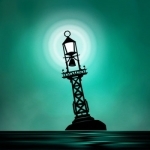
Sunless Sea
Games
App
LOSE YOUR MIND. EAT YOUR CREW. DIE. Failbetter’s award-winning PC game is now on iOS! Take the...
